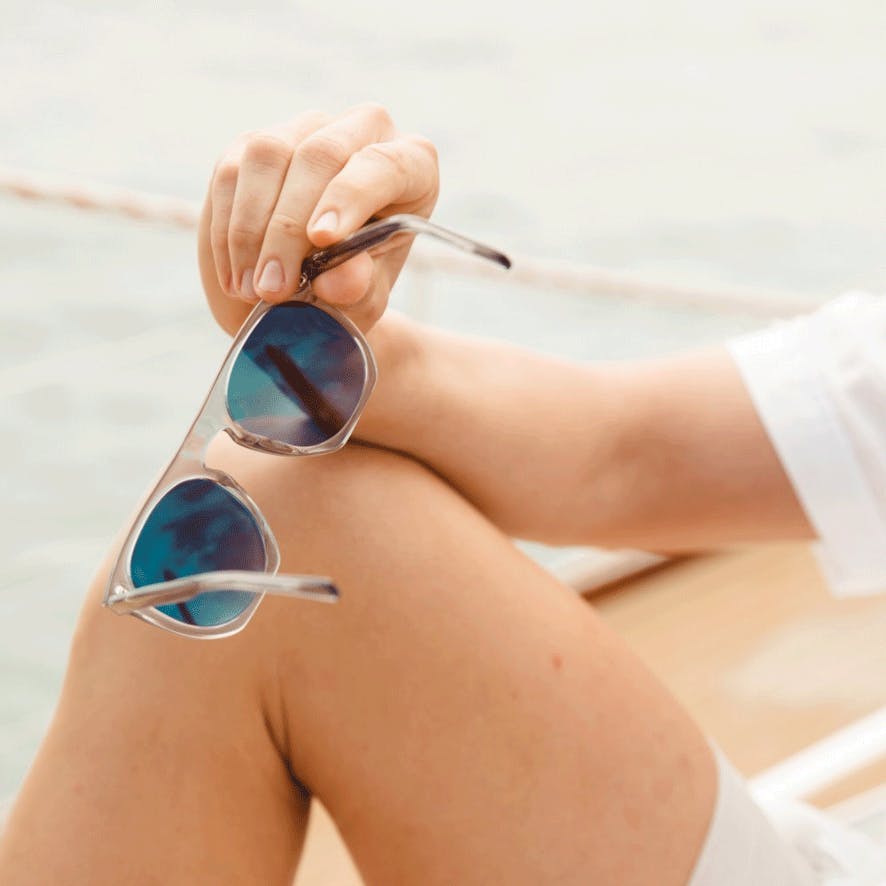How-to-guide
How To Tackle Glare This Winter
In this how-to guide, we discuss all things glare and why it's important to wear polarised sunglasses in winter too, not just the warmer months.
Do you ever catch yourself squinting when you walk outside or driving down the street? That’s a little something called glare. And just because the days are getting shorter and the temperature is getting cooler, it doesn't mean that glare from the sun is getting any less harsh.
Protecting our eyes is a practice that needs to be applied all year round; in this how-to guide, we discuss all things glare and why it's still important to wear polarised sunglasses in winter.

So, what really is glare?
Caused by intense bright light from the sun that bounces off reflective surfaces, glare can often cause a temporary loss of vision or visual clarity when your eyes aren't protected. You might have experienced glare when driving, at the beach or when hitting the slopes; no matter the time of year, glare is present even when the temperature cools, so wearing sunglasses that can shield glare is just as important as wearing them in summer.
Types of glare:
How to block glare?
Several eyewear solutions exist in order to combat glare, however, the main and most effective solution is sunglasses with polarised lenses. Polarised lenses are designed to combat glare in bright light situations, which come in handy when playing sports, hanging out by the water or walking around on those really bright, sunny days. While non-polarised lenses provide protection against UV rays, polarised lenses contain a laminated filter built into the lens which blocks UV rays while reducing the effects of harsh glare. The functionality of polarised lenses are noticed most when out boating or fishing as once glare is removed, you can see through the surface of the water. Polarised lenses are a go-to for deep-sea fisherman and watersports enthusiasts, polarised sunglasses are also favoured by drivers as distracting reflections off of other cars are significantly reduced. The chemical film in polarised lenses allows light to pass easily while holding back the intensity of glare, with other added benefits like reducing eye strain and improving visual clarity.
Key features of polarised lenses:
Benefits of wearing polarised sunglasses in winter
- If you live somewhere where it snows, wearing polarised sunglasses during winter is crucial to avoid the strong glare that reflects off of solid or watery surfaces. Icy footpaths and snowfields will reflect the sun's rays which cause it to magnify and reflect directly into your eyes. Polarised lenses will block the blinding glare allowing you to see more clearly.
- Despite the temperature dropping in winter, the sunlight can be just as intense as the sun sits lower in the sky compared to sitting higher up in summer. This means that the sunlight is spread over a larger area, so you might feel the intensity of the sun's rays just as much in winter.
- Wearing sunglasses is an absolute must when driving, the low winter sun combined with wet or frosty roads can cause sudden blindness for drivers. Wearing polarised sunglasses will filter bright light and reflections so you can see the road in more detail.

































